If you play or travel in snowy backcountry areas, you and your companions must each carry three vital pieces of gear: an avalanche transceiver (aka an avalanche beacon), a probe and a shovel. In the hands of well-trained users (training is the fourth essential), this gear can mean the difference between life and death if an avalanche occurs. Survival literally depends on how quickly rescuers can pinpoint and excavate a buried avalanche victim.
Your skill in using your transceiver is far more important than the model you choose to buy.
What are Avalanche Transceivers?
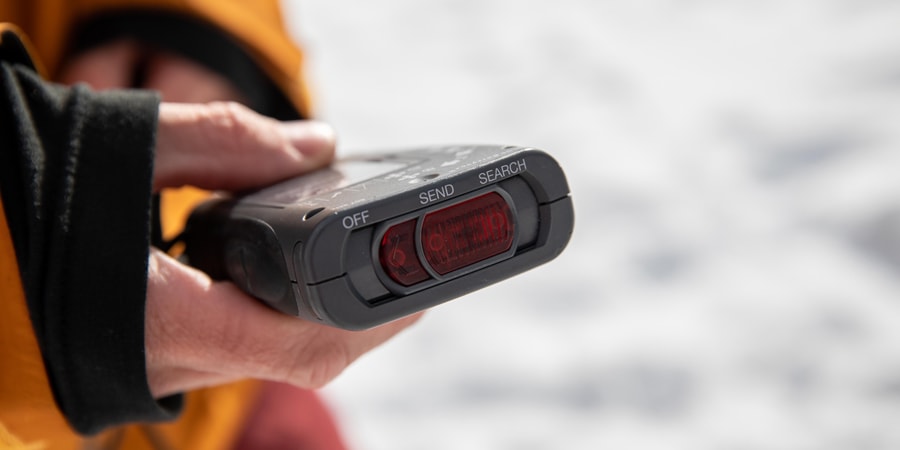
Avalanche transceivers are worn close to the body and continuously emit a radio signal that can be picked up by other transceivers in the area. Companions with transceivers can switch them to "search" mode to locate a buried person's signal, and with a probe help them pinpoint exactly where to dig.
All transceivers today operate on the same international standard of 457 kHz, so you don't need to get the same brand and/or model as others in your group. You also don't need to pay a premium price unless you want a unit with more advanced features.
For an overview on all avalanche safety essentials, including additional gear and tools worth considering, read Avalanche Safety Gear and Checklist. For tips specifically on snow shovels, read How to Choose a Snow Shovel.
The Difference Between a Transceiver and a PLB
An avalanche transceiver is not the same as a Personal Locator Beacon (PLB), which can only be used to send an SOS signal to search and rescue teams; those teams are likely to be too far away to aid you in a successful avalanche rescue. Many avalanche experts prefer the term "transceiver" to "beacon" so as not to confuse the two. A PLB or satellite messenger will still be important if you need medical support, help with evacuation or other help after digging out a victim.
Transceiver Features
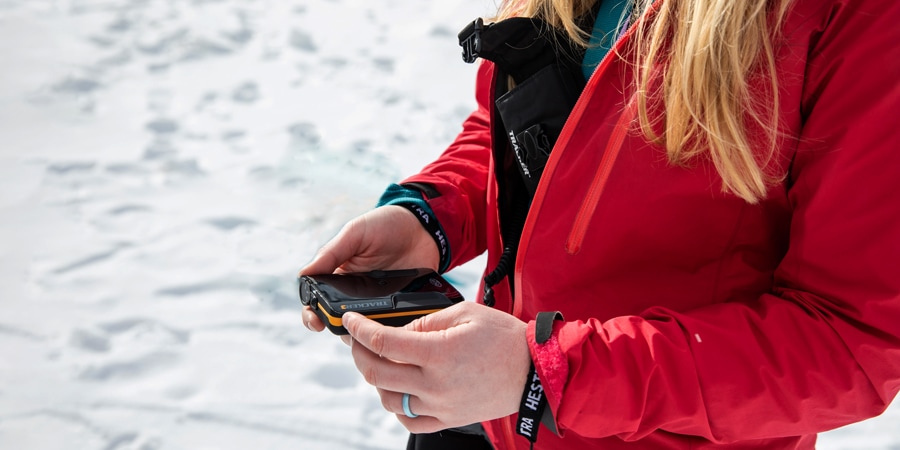
A higher price relates to the number and sophistication of a unit's features. It might also reflect a lightweight and compact design. When choosing an avalanche transceiver, consider these features:
Number of antennas: Most transceivers today (including units sold at REI) have a three-antenna design that allows searchers to more efficiently pinpoint the location of the victim, regardless of the orientation of the buried person's transceiver. This is a must-have feature.
Display screen: A display communicates the direction and distance to a buried victim. User interfaces vary by brand and model, but most are fairly intuitive to use.
Range: Consider stated range distances to be a best-case scenario. Greater range may allow you to pick up a signal from a farther distance. In reality, the range is often shorter because the orientation of a sending unit to a searching unit is rarely ideal. Search technique calls for searching in 20-meter swaths, so you need that as a minimum.
Multiple burials: Valuable in a slide that has several victims, this feature lets you flag the location of each buried person so you can move on to search for additional party members—then you can go back and do a fine search, victim by victim.
Audio signal: Most models also emit an audible tone that also helps searchers know when they're getting closer to a victim.
Auto revert to send: This function automatically switches a transceiver to send mode if it's accidentally left in search mode and has been stationary for a specified time. The way this feature works varies between models, and different scenarios make it more or less useful.
Pros
Automatically switches your device to send if it is buried by a secondary avalanche while searching
Automatically switches your device to send if you forget to put the unit in send mode initially
Cons
A subsequent avalanche can easily rip a transceiver out of a searcher's hand, which can divert subsequent searchers to the location of that person's now separate transceiver
An auto-reverted transceiver in a searcher's hands can confuse other searchers who pick up its signal instead of a buried victim's
Backup transmitter: This separate product is not an avalanche transceiver because it has no search function. Its purpose is to transmit in the event that a subsequent avalanche separates you from your regular transceiver while you are searching for someone else who is buried.
Transceiver Batteries
Most transceivers require replaceable alkaline batteries. While alkaline batteries drain more quickly in cold temperatures than lithium batteries, they offer a key advantage: Their energy drain is gradual, as opposed to lithium batteries that maintain a high charge level until it drops precipitously. Alkaline batteries make it possible to provide a reliable battery level readout on a transceiver, which is critical because you don't want your batteries suddenly dying during a search.
A few transceivers have technology that allows them to provide a uniformly reliable battery level display with lithium batteries. If that's the case, the manual will specify lithium batteries.
Always use the type of batteries recommended in your user manual
Follow all the recommendations in your manual. In addition, because cold temperatures can compromise battery performance, store replacement batteries somewhere close to your body (for warmth). For extended off-season storage, remove the batteries.
Tips on Using an Avalanche Transceiver
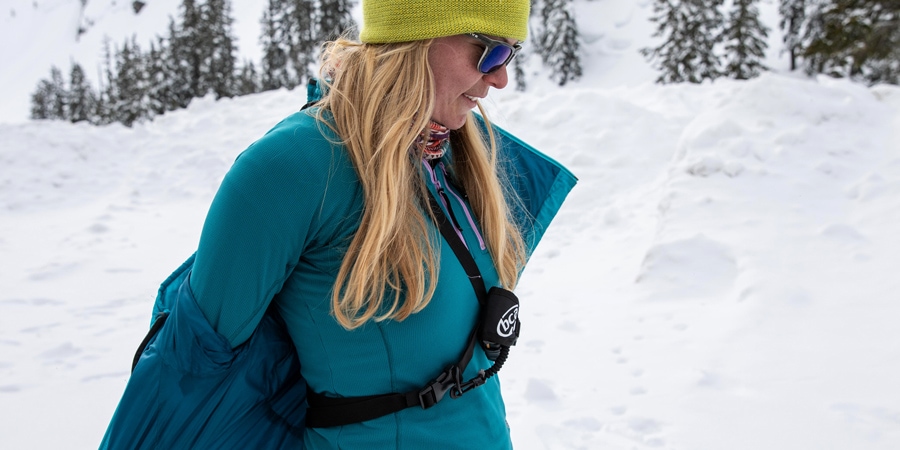
Carry your transceiver the way the manual recommends
Properly carrying your device guards against it being separated from you during an avalanche. Most manufacturers provide a harness or carrying system and recommend that you carry your transceiver close to your body. It should also be worn underneath your outer layer of clothing, close to your torso, and not stowed in a pack. Some people choose to carry their transceiver in a pocket, but this is only acceptable in a securely zipped pocket, ideally attached via the transceiver lanyard to an internal sewn-in loop. Check your manual for the recommended way to carry your transceiver.
Learn and practice how to use your transceiver
Survival rates drop off significantly after someone is buried for just 10 minutes, so it's critical you become an expert with yours. Read your transceiver manual, take an avalanche rescue class and regularly practice using your transceiver, probe and shovel.
For more information, read Avalanche Rescue Overview in our Avalanche Awareness Series.
Always keep a transceiver in send mode (until a search is needed)
It's critical to keep the transceiver in "send" mode (aka "transmit" mode) at all times because you won't be able to switch modes after an avalanche buries and immobilizes you. Searching transceiver wearers will immediately switch their units to "search" mode in order to receive the signal your transceiver is sending out.
Beware of electronic interference
Avoid carrying other electronic devices such as cellphones or a radio close to your transceiver. Such devices can interfere with search and transmit signals.
Always Perform a Trailhead Transceiver Check
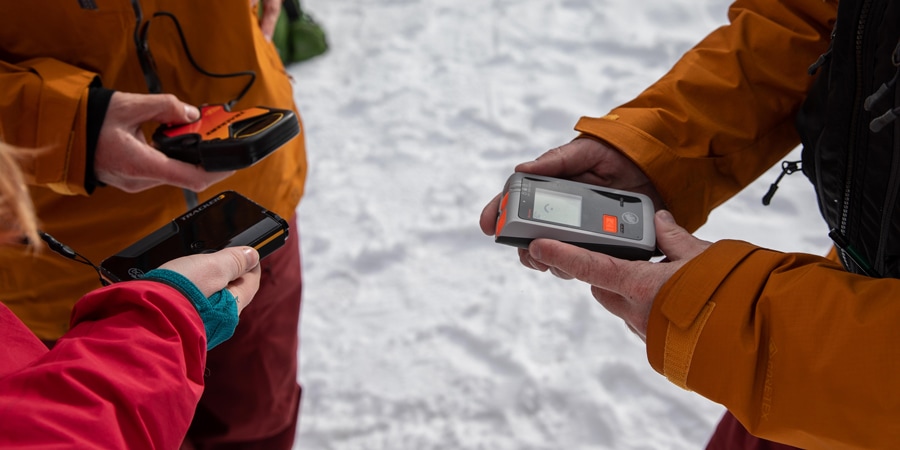
This must-do step ensures that both the send and search modes for every party member's transceiver are functioning properly—and that everyone is in "send" mode before setting off.
Here are the steps for the transceiver check:
Step 1: Check the battery level
- Anyone whose transceiver displays less than 75% should switch to a new set of batteries
Step 2: Make sure your "search" function works
- Stand in a circle with the leader's transceiver turned to send/transmit mode
- Others in the group switch to search mode
- Thumbs up if all receive the leader's send signal
Step 3: Make sure your "send" function works
- Now, the leader moves away (about 20 yards down the trail) and switches to search mode
- Everyone in the group switches to send/transmit mode and walks past the leader, each spaced apart by about 20 feet
- The leader verifies receiving each person's signal
Step 4: Verify that the leader is also in "send" mode
- The leader then switches to send mode and has someone else visually verify that fact
- Everyone in the group should now be in "send" mode and all set to move out
RECCO Reflectors vs. Avalanche Transceivers
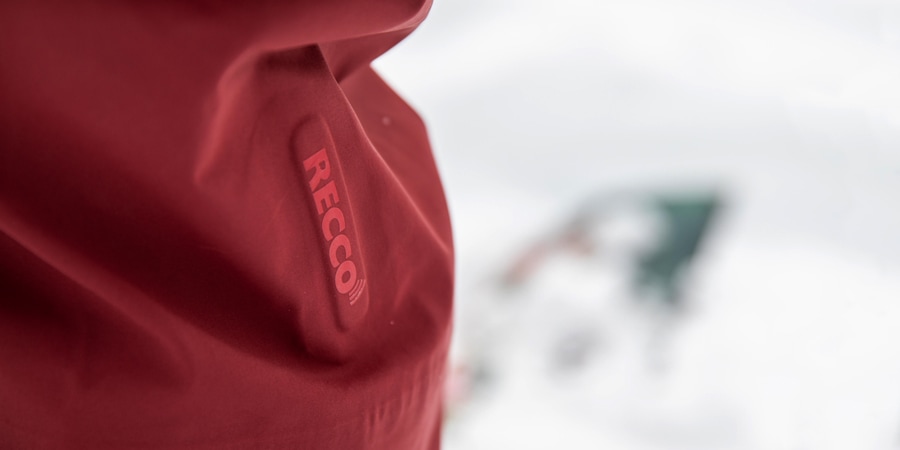
RECCO® reflectors are not transceivers. People wearing these passive reflectors (typically sewn into ski clothes or ski packs) can be located by ski patrols and search-and-rescue groups that carry a large, technically sophisticated RECCO detector unit. A RECCO detector sends a signal that bounces off the wearer's reflector—no transmission is required by the buried person.
RECCO detection and rescue is really only practical in a confined area like a ski resort (hundreds of resorts are equippped with RECCO detectors), because rescue timelines are too tight to send out a distress call and have distant search and rescue teams respond in time.
Remember: Safety is your responsibility. No internet article or video can replace proper instruction and experience—this article is intended solely as supplemental information. Be sure you're practiced in proper techniques and safety requirements before you engage in any outdoors activity.





